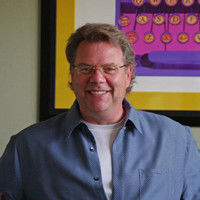Attack of the Three-Act Structure: Run for Your Lives!
I've tackled many popular writing myths and memes over the last several years: writer's block, the idea of the high-concept, that outlining is a bad thing, that writing groups work, to name just a few, but now, I think we are ready to grapple with the granddaddy of all writing memes: the three-act structure.
Whether it's three, five, six, or seven acts, it doesn't matter. 'Acts' are all useless to writers, as storytellers. For many, when I say this with such certainty, with such sureness, they feel it is just pure bravado and arrogance on my part. After all, no one should know anything with the level of finality that I display when I say, "acts are useless to writers, so, what gives me such a sure hand in this game? Why don't I want to give some of the high ground to the possibility that I might be wrong? Am I, in fact, wrong?" Many will think so, even after reading this, but, I would suggest the strength of my conviction about this issue is not due to ego run amok, or some other petty agenda.
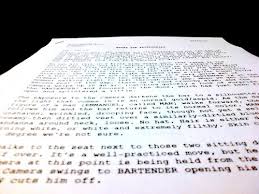
My sureness about rejecting the three-act structure sources from writing itself, from the writing process, development and storytelling. When you, as a writer and storyteller, learn the foundational tools of story development, you quickly realize that acts are not a part of storytelling and certainly not a part of the function of creative writing. It is mostly (not across the board) new writers, or writers who have limited exposure to narrative theory, story development best practices and classis story structure principles that fall prey to insidious writing memes like writer's block and three acts.
A perfect example of this is the industry town of Hollywood, where this notion of three acts has taken hold like a spiteful weed. To this day, at the highest levels of creative power, creative executives all talk about three acts. You can hardly 'take a meeting' with anyone without hearing this phrase uttered, or being asked to deliver a three-act screenplay. Not to point fingers, because I think the actual origin of the use of three acts today is impossible to 'finger', but one influential source is Syd Field. We all have a debt of gratitude to this man for trailblazing the field of screenwriting for popular audiences. He was a great man and he deserves his place in the pantheon of screenwriting marketing mavericks. Yeah, I know and here comes the 'but'.
But, Syd, more than anyone, popularized the idea of three acts through his 'paradigm' theory, the idea that stories are told in three acts and that the second act should be broken up into parts 'A' and 'B' and because he was 'the first' and because he was articulate and made sense, people assumed this must be true; this must be the way of things. Hollywood (and not just Hollywood) swallowed three-act structure hook, line and sinker. In short, three-act structure is a given, it is assumed to be part of the normal writing process. It is a meme that is almost universally unquestioned and accepted as chapter-and-verse of the writing how-to-bible.
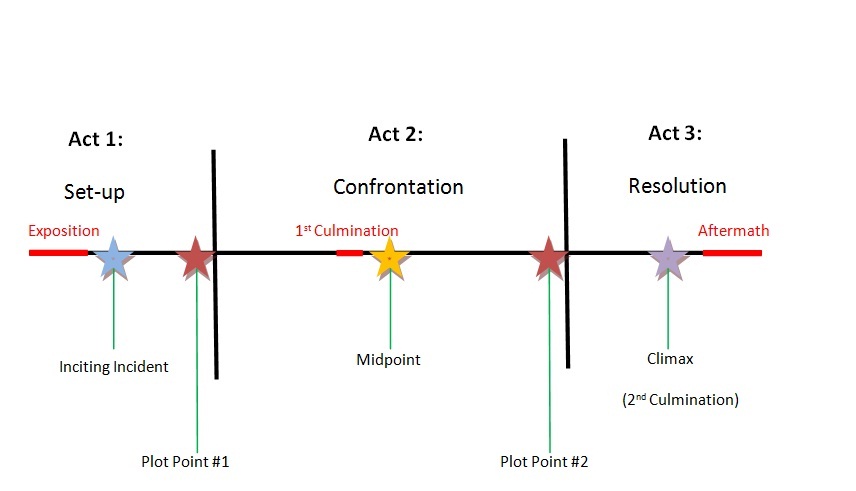
Where Did 'Acts' Come From?
Way back in the days of the Greeks, circa 500-300 B.C. drama was king. Theater, in the form of epic poetry, was the Comic-Con of the age. Physical plays performed by human beings on a stage that required moving sets and technical setups (some amazingly elaborate) were an unavoidable part of physical production of a play. Even then it was not thought smart to have the audience sit and watch the sausage being made, so some enterprising Greek came up with the idea of curtains or screens that could be put into place to shield the audience from the gross happenings between transitions. Curtains were one way to not break the mood, to not lose the tempo, etc. So, acts were born. Writers started writing to accommodate these changes in the physical staging requirements of their plays. Acts were sometimes one, two, three, or even ten! Even 25 hundred years ago, there was no hard and fast rule about the number three. So, the concept of acts is not an idea related to telling a story, it is an idea related to a specific form of delivering a story. For example, a staged performance. Acts are about the constraints of physical stage production and delivery, not writing or storytelling. Beyond theater, commercial television (or radio, yes, it still exists) is the only other place where acts make sense, because of commercials. Every 17 or 20 minuets you have to break the story to advertise, which means an act break. TV shows have anywhere from 4-6 acts, due to commercial requirements. Again, not a part of storytelling, but rather a consequence of selling soap, for example, how the story is delivered due to the constraints of the storytelling environment! (Remember, TV is not an entertainment medium, it is a sales medium, commercial TV shows exist so you'll watch the commercials, not the other way around.) You can't blame Aristotle (384-322 B.C.) He is often cited as the first person to talk about acts in theater in his foundational work Poetics, where he supposedly laid out the necessity of using acts in drama and comedy. WRONG! Aristotle talked about a beginning, middle and end in any drama or comedy, but he laid down no such rules about acts.
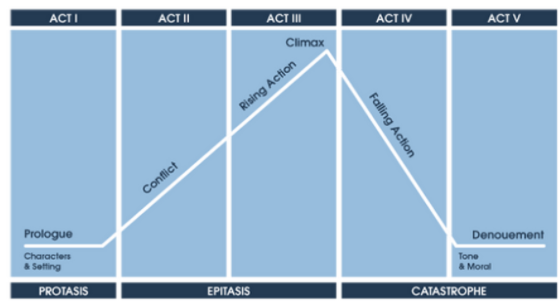
"Then, Shakespeare himself used acts. All his plays were five acts. Surely that's proof that acts are important", comes the plaintive cry. Actually, no. Shakespeare didn't divide his plays into acts. That was first done 'for him' by playwright Nicholas Rowe (1674-1718), in his six volume edition of Shakespeare's plays published in 1709. If Shakespeare were alive today, he would laugh if he opened a copy of one of his plays to see acts of any number. So, what happened? Elizabethan playwrights wrote in five acts, because that was the meme of the time. The tragedies of the great playwright Seneca were wildly popular in the 1600s, his five-act structure and his blood-thirsty themes, deeply influenced Elizabethan dramatists. Shakespeare's peers all drank Seneca-Kool-Aid, with some great results, but, none of those results were because of five acts. So, you can't blame the Bard for acts either.
The Pacing Problem
The only argument I have ever heard that relates to writing and that on the surface sounds reasonable and sane, is the claim that many writers make, "I love the three-act structure, because it helps me pace out a story." I have heard from many such writers that without thinking about their stories broken into three or more parts, they would have a harder time putting the right pieces in the right places to get the best pace and flow of their narratives. I have to admit, this makes sense, like "Eat your peas," or "Wait half an hour to go in the water after eating a meal." It's good common sense, sound thinking, solid advice and no more true than "The Earth is flat." The pacing argument doesn't hold any practical water for the simple reason that arbitrary divisions of a screenplay, or novel, do nothing to pace a story. What gives any narrative proper pace is story structure, which is a real, palpable and necessary phenomenon every writer needs to tell any story.
With that said, I have to soften my stance a bit and give some of that high ground. If three acts is like your fuzzy blanket that you can't give up and you are convinced that it is helping you write, then go for it. I say whatever gets you productive is worth continuing to use. You're not bad or wrong for using three acts, you've just drunk the Kool-Aid, like all of us, because you/we didn't know any better, but, there is a better way, a way that is natural to writing and fully supportive of the writing process, not just for selling soap or keeping butts in seats at the amphitheater.

Story Structure Is the Solution
Story structure is where writers need to go to find writing solutions. Every story has a structure, every story must have a structure. If it doesn't, then it is not a story, it is something else (see my blog about Stories verses Situations). If you don't know what story structure is, then you need to educate yourself as quickly as possible and learn about it.
We're not going to get into all the story gurus and their various methodologies, that can be as crazy making as talking about three acts, suffice to say there are many writing gurus who have their own proprietary story systems that would help you in this regard (including me). Find one you like, learn it and use it. Any one of them would be better than using acts.
Story structure works because it naturally reveals the right and proper flow for any narrative. Story structure paces out your story for you, naturally, using the story itself. It's not about acts, but rather story milestones, for example, sequences of scenes that build to structural moments that move the plot forward, build tension, raise stakes, establish setups and payoffs and that strategically weave subplots together to create narrative depth and complexity. Only story structure and story development principles can do that, not acts.
Conclusion
I say run, run, run, for your creative lives! Three acts have nothing to do with storytelling. Shake loose this idea and free yourself. Learn the basics of real story development (check out my book Anatomy of a Premise Line: How to Master Premise and Story Development for Writing Success), find a story structure system that works with your creative sensibility and use that to pace, structure, and design your narrative's flow. Minimally, know that there are real alternatives out there and that you will be hugely benefited in your creative process if you just walk away (nay, run) from the model of three acts and look instead for an approach that focuses on classic story development principles and not the same-ol-same-ol, cookie-cutter three-act straightjacket.
About Jeff Lyons

Jeff Lyons is a published author, screenwriter, editor, and story development consultant with more than 25 years' experience in the film, television, and publishing industries. He has worked with literally thousands of novelists, nonfiction authors, and screenwriters helping them build and tell better stories.
Jeff is an instructor through Stanford University's Online Writer's Studio, University of California at Riverside's Extension Program, and is a regular guest lecturer through the UCLA Extension Writers Program. He is a regular presenter at leading writing and entertainment industry trade conferences, as well as a contributor and advisor to leading entertainment industry screenwriting and producing fellowship programs, such as the Producers Guild of American's "Power of Diversity Producing Workshop," and the Film Independent Screenwriting Lab. Jeff is also a regular guest blogger on major writing industry blog sites like Script Magazine and Stage32.com. Over the years, he has been a trusted story development consultant to many indie producers, produced screenwriters, production companies, and VR and new media content developers.
Jeff has written on the craft of storytelling for Writer's Digest Magazine, Script Magazine, The Writer Magazine, and Writing Magazine (UK). His book, Anatomy of a Premise Line: How to Master Premise and Story Development for Writing Success, is the only book available devoted solely to the topic of story and premise development for novelists, screenwriters, and creative nonfiction authors. His other book, Rapid Story Development: How to Use the Enneagram-Story Connection to Become a Master Storyteller, will be published by Focal Press in late 2017.
In addition to his nonfiction work, Jeff is co-authoring (with Stephen David Brooks) the Jack Be Dead Series, the first volume of which was published on Amazon in March 2016, Jack Be Dead: Revelation. This, and his other genre fiction work, is published through Storygeeks Press.
Jeff's author site can be found at: www.jefflyonsbooks.com
Jack Be Dead can be found at: www.jackbedead.com.
Like this blog post? Please share it on social media (Facebook, Twitter, LinkedIn, email etc) by using social media buttons at the top of the blog. Or post to your personal blog and anywhere else you feel appropriate. Thank you.
As always, we welcome thoughts and remarks on ANY of the content above in the Comments section below...
| Stage 32 & Michael Wiese Productions Present: The Future of Story - Los Angeles |
| Coffee & Content - The Magic of Stanley Kubrick |
Search Stage 32 Blog
There are now 4041 blog posts for you to enjoy. Search them all by tags below.
Acting, Advice, Cinematography, Coffee & Content, Composing, Contests, Distribution, Featured, Filmmaking, Financing, Inspirational, Networking, Producing, Screenwriting, Success Stories, Tips, Trending,Relevant Tags
Recommended Articles

Insider Intel: The Studio War & The Rise of Indies
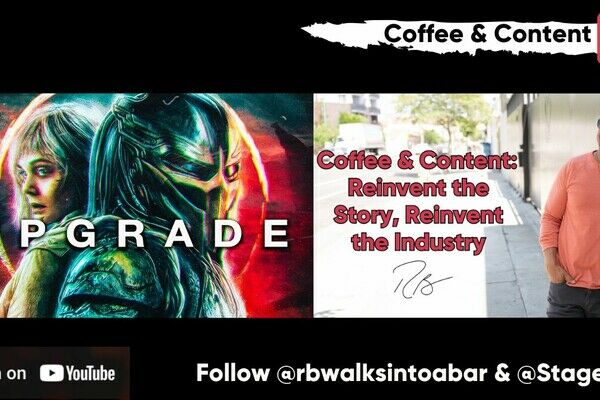
Coffee & Content: Reinvent the Story, Reinvent the Industry

Green Lights and Grey Areas: Expanding Creative Collaboration in Publishing

How to Get Help from Stage 32: Meet the Teams Behind the Scenes

Find Your Footing on Stage 32: Join Our December Community Open House

Coffee & Content: Why Your Pitch Needs to Be Human

Stage 32 Certification Featured In IndieWire!

Stage 32 + DramaBox Join Forces to Launch World's First Vertical Drama Incubator

Coffee & Content: The Genius of Weapons and How to Know When Your Script Is Ready


